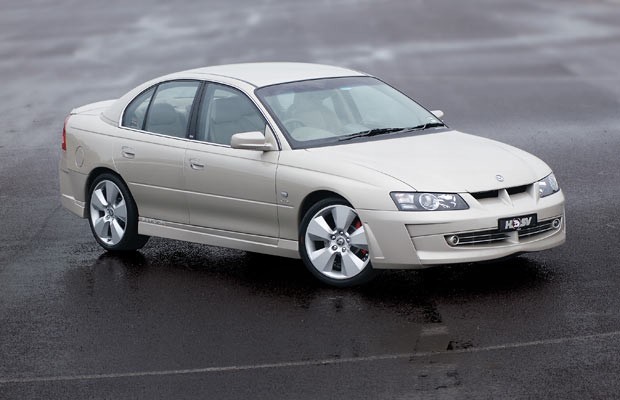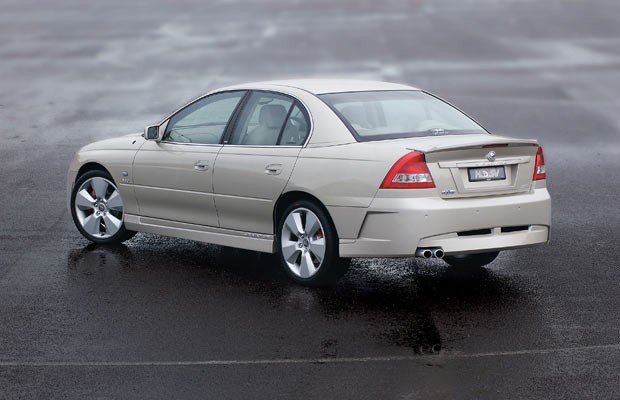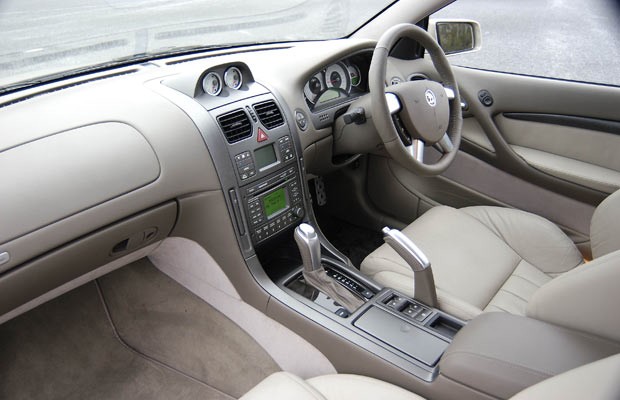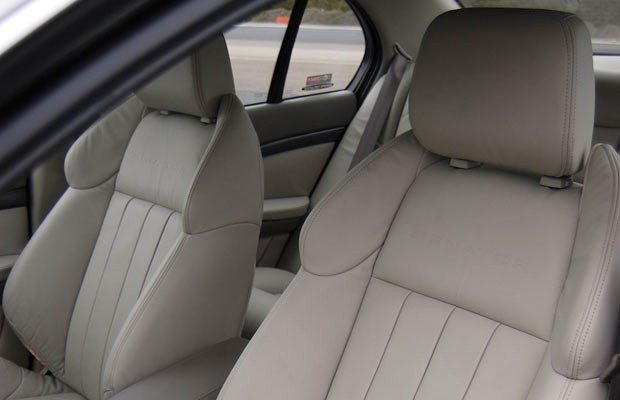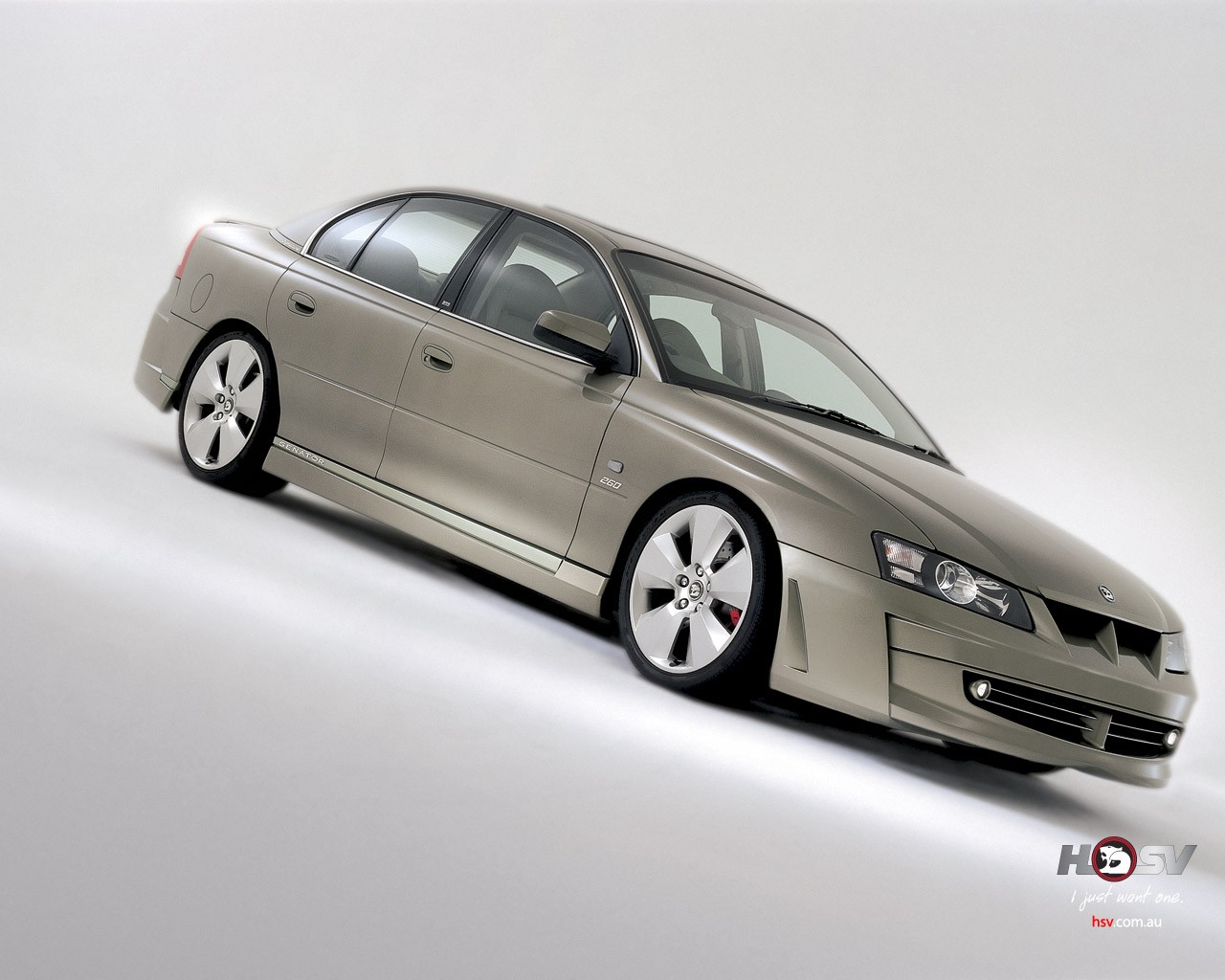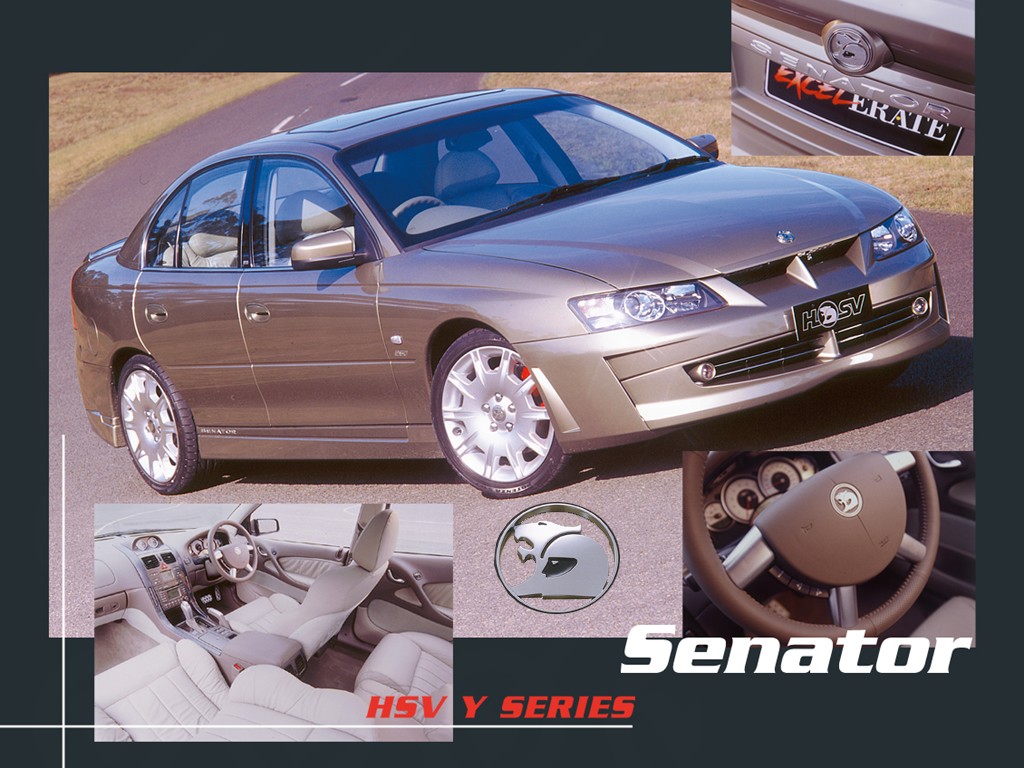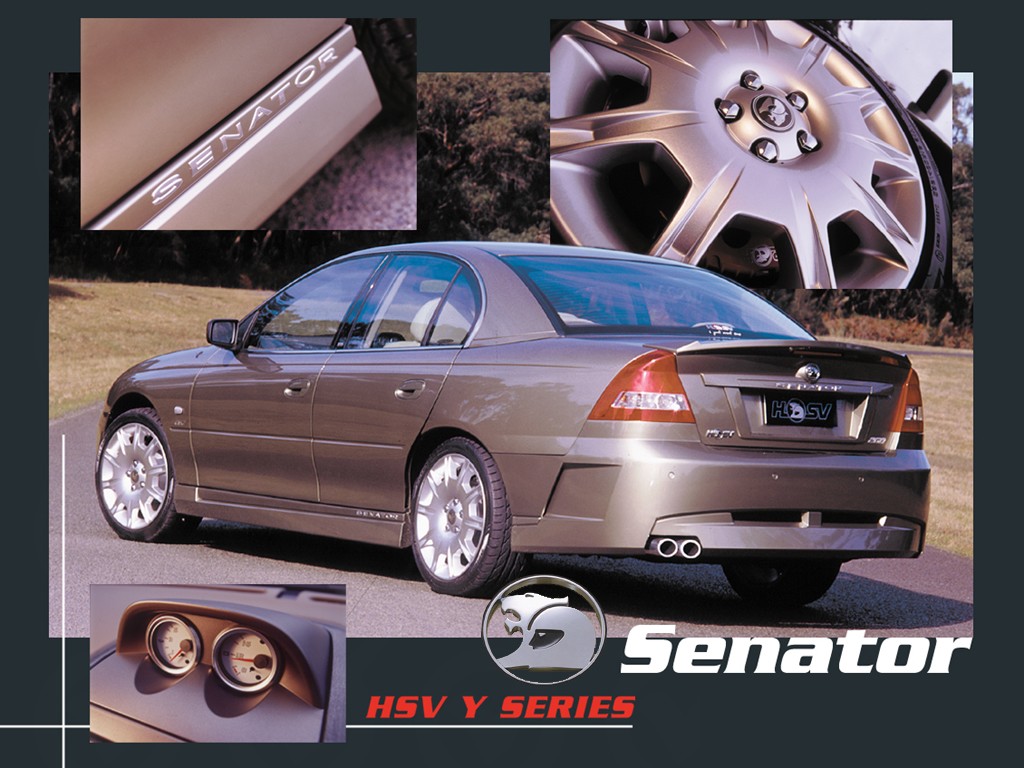
- Powerful 5.7-litre LS1 V8 engine
- Accomplished dynamics
- Accurate, precise steering
- Four-speed automatic transmission provides clunky downshifts
- Tremec T56 manual transmission has sloppy action
- High fuel consumption
HSV Y-Series I Senator (2002-03)
Overview
Released in October 2002, the HSV Y-Series I (Y-I) Senator was a rear-wheel drive, performance sedan. Manufactured in Elizabeth, South Australia, and finished by HSV in Clayton, Victoria, the Senator was powered by a 5.7-litre V8 petrol engine that was mated to either a six-speed Tremec T56 manual transmission or an upgraded four-speed 4L60-E automatic unit. The Y-Series Senator range consisted of both standard Senator and Senator Signature models.
LS1 V8 engine
The all-aluminium 5.7-litre LS1 pushrod V8 engine had a 99 mm bore, 92 mm stroke, flat-topped pistons, two valves per cylinder and a compression ratio of 10.0:1; for the Y-Series Senator, calibration changes resulted in a peak power increase of 5 kW to 260 kW. Although calibrated to run on 95 RON premium unleaded petrol (PULP), the LS1 engine could also run on 91 RON unleaded petrol with a small loss in power.
Dimensions and suspension
Compared to the VX Senator , the Y-Series Senator was 43 mm longer (at 4980 mm), but width (1842 mm), height (1450 mm) wheelbase length (2789 mm) were unchanged.
The Y-Series Senator had MacPherson strut front suspension and independent rear suspension with toe control links. Changes for the Y-Series, however, included new steering components and a new suspension tune which included digressive shock absorbers.
| Engine | Trans. | Peak power | Peak torque | |
|---|---|---|---|---|
| Senator, Senator Signature |
5.7-litre LS1 petrol V8 | 4sp auto, 6sp man. |
260 kW at 5600 rpm | 475 Nm at 4000 rpm |
Safety equipment
Standard safety equipment for the Y-Series Senator included dual front airbags, front side airbags, ABS, traction control and front seatbelt pretensioners.
Brakes
The Y-Series Senator had ventilated and grooved 330 mm by 32 mm front and 315 mm by 18 mm rear brake discs with two-piston PBR calipers. The Senator Signature, however, had cross-drilled 343 mm front and 315 mm rear discs with four-piston calipers front and rear.
Features
Standard features for the Y-Series Senator included 18-inch alloy wheels, a 200 watt Blaupunkt sound system with six speakers and a six-disc CD player, dual zone climate control air conditioning, cruise control, ‘Light Shale’ leather seats and door inserts, eight-way power adjustable front seats, front fog lamps, automatic headlights, rear parking sensors, a leather-wrapped steering wheel, remote central locking, power windows and mirrors, a height and reach adjustable steering wheel, trip computer, cargo net and immobiliser. The Senator was also fitted with a limited slip differential.
In addition to its more powerful brakes, the Senator Signature was fitted with 19-inch alloy wheels.
Brochure
Related links
- Holden Special Vehicles: HSV Y-Series I Senator
- Holden Special Vehicles: HSV Y-Series I Senator Signature
HSV Y-Series II Senator (2003-04)
Overview
Released in September 2003, the Y-Series II (Y-II) Senator introduced a more powerful 5.7-litre V8 engine, 4L65-E heavy-duty four-speed automatic transmission, a front strut brace and, for the R8 variant, HSV’s ‘Performance’ suspension tune. Inside, there was a new backlit anthracite steering wheel.
To achieve the 25 kW and 35 Nm increases in peak power and torque, changes were made to the intake, extractors and engine calibration. Specifically,
- the lower air box was redesigned with a bigger opening and the ‘zip’ tube (which directed air into the air box) had its ‘bellows’ section replaced with a tube that had less airflow resistance; and,
- new primary 44 mm pipes (previously 41 mm) were matched to the exhaust ports, the four-into-one collectors were redesigned and a 63 mm down pipe was introduced (previously 57 mm).
| Engine | Trans. | Peak power | Peak torque | |
|---|---|---|---|---|
| Senator, Senator Signature |
5.7-litre LS1 petrol V8 | 4sp auto, 6sp man. |
285 kW at 5600 rpm | 510 Nm at 4800 rpm |
Safety equipment
Compared to its Y-I predecessor, standard safety equipment was improved with the introduction of active front seat head restraints.
Related links
- Holden Special Vehicles: HSV Y-Series II Senator
- Holden Special Vehicles: HSV Y-Series II Senator Signature
- Press Release: HSV Y Series II and V2 III Coupe (September 2003)
- Wikipedia.org: Holden VY Commodore – HSV
- Wikipedia.org: HSV – Y Series
